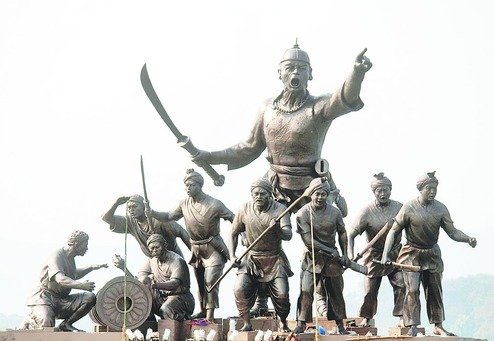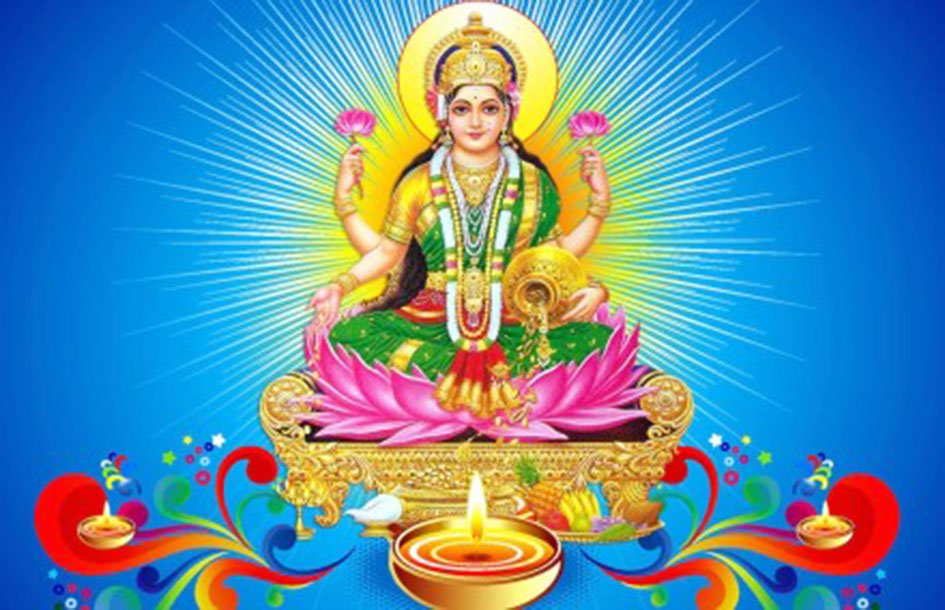By: Lakhya Pratim Nirmolia
Assam, the North-East frontier state of India is surrounded by the great mountain ranges north, east and south inhabited by different hill tribes, mostly of Mongolian stock (Devi, Lakshmi, p. 01). From very ancient times Assam has been popular for its beautiful climate and natural resources. That is why foreign invaders came to Assam to occupy this fertile land. But they failed to annex this territory within their empire. The charms of Assam are enhanced by the mighty river Brahmaputra which flows through the centre of Assam from the Himalayas and created a name i.e. the Brahmaputra valley on its own. The Brahmaputra valley is comprised of the modern districts of Dhuburi, Goalpara, Kamrup, Nagaon, Sonitpur, Golaghat, Jorhat, Sivsagar, Dibrugarh, Lakhimpur and Dhemaji. Due to geographical location, the Surama or Barak valley could never play a vital role in shaping the history and culture of Assam.
The written history of Assam began when the Ahoms, a section of the Tai (speaking group) of the Mongoloid race of south-east Asian regions, who originally dwelt in Mongolia and the south-western part of China in the south of Yang-Tse-Kiang, penetrated the South-Eastern corner Assam in the second half of the 13th century. According to P. Gogoi, “It was from the Tai state of Mong-mit that the Ahoms under the leadership of Sukapha came to Assam. But there have been different opinions about the origin and migration of the Ahom king Sukapha”. Sir Edward Gait mentioned in his history that Sukapha’s original homeland was Mao-Lung. S. K. Bhuyan based on the Tai-Ahom and the Assamese chronicles states that it was Mao-Lung within the kingdom of Mung-Mao, a Shan state in upper Burma from where Sukapha came. According to E. R. Leach, the existence of this state of Mao-Lung or Mong-Mao may be placed somewhere between the Nam-Mao and Nam-Wan rivers some fifty miles to the east of Bhamo in Burma. From the above definitions, we come to know that the Tais or the ‘Shan proper’, to which Sukapha and his people belonged, might have spread from western Yunan to upper Burma and it was from this nearest station that they came to the Brahmaputra valley.
Before the advent of Ahoms the glorious history of ancient Kamrupa has passed away and the country was divided into many small states where tribal chiefs ruled. When Sukapha, the founder of the Ahom kingdom, reached Assam in the last part of 1228 AD a new history started for Assam and its people. After wandering from one place to another Sukapha finally established his first capital in 1253 AD at Charaideo. As a shrewd politicians and conqueror Sukapha came to know that establishing a new capital and kingdom in an unknown place is not an easy task. So, Sukapha avoided the policy of war and started to maintain peace and matrimonial alliance with the local people. Sukapha, in Assam, established a cordial relationship with three local tribes i.e. Moran, Borahi and Chutia by marrying their daughters and appointing their men as cooks (changmai) in the royal kitchen. According to Deodhai Assam Buranji since that time, there was an admixture of blood, and children were of mixed origin, as the Ahoms had not brought their wives when they first came and as they accepted wives only when they came here. In 1268 AD, after a reign of forty years, Sukapha died. He had left a strong and permanent foundation of the Ahom kingdom from where the successors of Sukapha started their new life and administration for six hundred years in Assam.
During the time of Suhungmung alias Dihingia Raja (1494 AD -1539 AD), the Ahoms established a relationship with the Muslim rulers of Bengal. From the records of the Buranji (History), it is known that there were several invasions led by the Sultans of Bengal during the first half of the 16th century. The Ahom kingdom had faced the first Mughal invasion during the period of Susengpha alias Pratap Singha for almost four decades. Though the Ahom King Pratap Singha was able to dominate the Mughal army they never bowed down. The last powerful Mughal ruler Aurangazeb had made two decisive invasions against the Ahom kingdom under the leadership of Mirjumla in 1663 AD and Ramsingha, the king of Ambar in 1671 AD respectively. The last most significant battle took place between Ahom and Mughal on the bank of the river Brahmaputra at Saraighat in 1671 AD where the Mughal army was bitterly defeated at the hands of the Ahom army. In the battle of Saraighat, the Commander-in-Chief of the Ahom army, Lachit Borphukan played the most significant part.
Historical background of the battle:
In 1661 AD, Mirjumla, the commander-in-chief of the Mughal army attacked the Ahom kingdom to annexe Assam within the Mughal territory. During that time, Joydhvaj Singha was the ruler of the Ahom kingdom. Joydhvaj Singha, though a capable Ahom ruler, could not able to defeat the Mughal army and he took shelter at Namrup for a long time. Of course, the Mughal army faced lots of troubles and difficulties from the Ahom army. Moreover, they were not aware of the wet climate of Assam. During the rainy seasons, the Mughals were army able to attack the Ahom army due to a lack of proper transport and communications. Mirjumla himself was suffering from illness. As a result, both the Mughal commander and Ahom king settled for a peace treaty. In 1663 the famous treaty of Ghiladharighat was signed between the Ahom and the Mughals. According to the terms of the treaty, the Ahom king accepted the supremacy of the Mughal ruler. Moreover, Joydhvaj Singha was compelled to send one of his daughters, Hemo Aaideo, to the Mughal harem. Soon after the conclusion of peace Mirjumla gave orders for a return march. Mirjumla appointed Rasid Khan as the Faujdar of Gauhati and Muhammad Beg as the thanadar of Kajali under him.
After the humiliating defeat inflicted by Mirjumla, the Ahom king Joydhvaj Singha died in despair. He left no male issues. He was, therefore, succeeded by his cousin, the Charing Raja, who on his accession, adopted the Hindu name Chakradhvaj Singha and the Ahom name Supungmung. Joydhvaj Singha exhorted Chakradhvaj Singha to “remove the spear of humiliation from the bosom of the nation”. There followed a complete overhaul of the Ahom kingdom. People who had dispersed due to Mirjumla’s invasion were rehabilitated in the appropriate khels, food and military productions were increased, new forts were constructed and garrisoned and an expeditionary army was organized under a new commander – Lachit Borphukan (Sarkar 1992: 199). Alliances were renewed with the Jayantia, the Rajas of Koch Bihar, the hills states of Kamrup and the Kachari kingdom. The Ahom king also established a friendship with some border tribes like the Nagas, the Miris, and the Deoris evidently to seek their help in an eventual conflict with the Mughals. During this period Mughal imperial demands were tactfully and diplomatically rebuffed. But when the new Faujdar of Guwahati asked Chakradhvaj Singha for a supply of beautiful girls to the Mughal camp, he flared up. King Chakaradhvaj Singha wanted to march against Firuz Khan to teach him a lesson. But on the advice of his officer’s king Chakradhvaj Singha did not take any steps against Firuz Khan. Moreover, during that time the war preparation against the Mughals was incomplete.
In 1667 AD, Rasid Khan was succeeded by Firuj Khan as the Faujdar of Guwahati. The new Fajudar wrote a strong letter to the Ahom king demanding the remaining taxes. The Faujdar also presents a sirpao (i.e. siropa, lit. from head to foot, or robe of honour) and a jamdhar (dagger) through two messengers, Dor Beg and Rustom Beg, on behalf of the Mughal emperor. This incident had a great impact on the Ahom king and so he immediately convened a meeting of the nobles and the officers, where he said, “Death is preferable to living in subordination to foreigners. I have to surrender my independence for a suit of the sewn garment. Never were my ancestors subservient to any other people, and now for my part, I cannot remain under the vassalage of the Mughals. A descendant of the heavenly king, how can I pay tribute to the wretched Mughals? You shall devise and adopt measures so that I can regain my garrison of Gauhati after expelling there from the foreign usurpers” (Baruah, S.L., 1997: p.269). But the officers of King Chakradhvaj Singha advised that the war preparation was not yet to be completed and that it would not be the right time to fight against the Mughal army. The king accepted the advice of the officers and waited for an opportunity to fight.
Ahoms marched towards Gauhati:
In August 1667 AD, the Assamese army under the leadership of Lachit Borphukan advanced towards Gauhati. On the way, the Ahom army occupied Banhbari Fort on the northern part of the Brahmaputra and Kajali Fort on the South of the Mughals. Within a very short period, the Assamese army occupied the Sonapur, Panikhaiti and Tantimara Forts of the Mughals. In the meantime, Jayantia, Rani, Luki, Beltola, and Dimarua submitted to the Ahom army against the Mughals. The Assamese army with new enthusiasm moved towards Gauhati. The Mughal army was not able to check the Assamese army and a battle took place between Ahom and Mughal at Itakhuli on November 4, 1667 AD. The Ahom army gained a huge victory against the Mughals and obtained a large number of war materials including a fair amount of gold, silver, brass and copper. As a result of this success, the Ahom king regains his lost power and glory and extended the western boundary of the kingdom up to the river Manaha. The Ahom king Chakradhvaj Singha after victory against the Mughal said, “It is now that I can eat my morsel of food with ease and pleasure” (Baruah, S. L., 1997: p.271).
Gauhati was chosen as the headquarters of the Barphukan. Pandu and Saraighat (Srighat) were strongly fortified and prompt arrangements were made for the administration of the conquered territory. A survey of the country was carried out and a census was taken.
Advancement of Ram Singha:
The Mughal emperor Aurangzeb received the news of the defeat and loss of Gauhati in December 1667. Then Aurangzeb sent another group of the army under the leadership of Raja Ram Singha of Ambar to invade Assam. Raja Ram Singha was also accompanied by Rashid Khan, the former Thanadar of Gauhati. The total strength of his army consisted of 18,000 cavalries, 30,000 infantry including 15,000 archers from Koch Behar and a small fleet of 41 war-boats only. Receiving the news of Ram Singha’s advance to invade Assam the Ahom king Chakradhvaj Singha sent his forces under some veteran generals to the aid of Lachit Borphukan. Aware of Mughal military might and the weakness of the Ahom soldiers, especially against cavalry and mounted forces in open fields, Lachit Borphukan and others decided to choose the terrain of the battlefield with care. The choice fell on Guwahati, which was hilly, on the way to the heart of the Ahom kingdom and without open fields where the Mughal forces would not have sufficient mobility. The only way east was via the Brahmaputra River passing through it. The Brahmaputra at Saraighat, at its narrowest 1 km width, was ideal for naval defence. To check the Mughal advance, Lachit prepared a complex system of mud embankments in Gauhati when the Mughals found Gauhati impregnable by land; they would be forced to use their navy, which was their weakest asset. Lachit set up his headquarters at Andharubali, the sandbanks between the Kamakhya and Sukreshwar hills. The deliberations of the war council were recorded and made into a manual (Sarkar 1992:213).
When the Mughal march reached the Manas River in March–April 1669 and defeated some Ahom forces, Lachit decided on a strategic retreat to Gauhati. Three Rajkhowas were asked to meet the Mughal forces and retreat to Gauhati, keeping the Mughal forces in sight but beyond the reach of their weapons. When the Mughals reached closer, he started a sham negotiation with Ram Singh, who had set up camp at Agiathuti, calling him a “Bhai Raja” (brother prince). And when he was ready for the Mughal attacks, he sent words to Ram Singh via Firuz Khan that “Gauhati and Kamrup do not belong to the Mughals” since they were taken from the Koch and that the Assamese were prepared to fight to the last (Sarkar 1992:214).
A period of battles between the Ahom and Mughal forces in the region of Gauhati followed, with varied results with forts changing hands many times. In 1669 A.D. the battle of Alaboi took place between the Ahom and the Mughals. In the battle of Alaboi, the Ahom lost approximately 10, 000 Assamese soldiers. This incident deeply impact king Chakradhwaj Singha and he died in 1669 A.D. after the battle of Alaboi. He was succeeded by his brother, who in his accession assumed the Hindu name Udayaditya Singha and the Ahom name Sunyatpaha.
The Ahom soldiers were demoralized after their losses at Allaboi. Their Commander-in-Chief, Lachit Borphukan and their admiral were both seriously ill, and the Nara Raja, the son of the Miri Sandikoi, was in command. An encounter both on land and water ensued near Ashwakranta. The Ahom land forces, under Laluk Borgohain Phukan, worsted the Mughals, but the Mughal boats compelled the Ahom boats to retreat to Barhila, north of Saraighat. The land forces, fearing encirclement, too retreated (Sarkar 1992:226). The battle reached a crucial phase when the Mughals were beginning to get close to Andharubali. The Borphukan, as well as the Nara Raja, sent messages to inspire the soldiers. It looked as if there was a break in command and some boats began falling back to Kajali and Samdhara. Lachit Barphukan was observing this from his sickbed in the gatehouse of the Itakhuli fort.
At this crucial moment in the battle, when the Mughals were about to land at Andharubali, the Borphukan sent orders via katakis to all the land and naval forces to attack. He also ordered seven warbots for himself and had Nadai of Kharangi carry him to a boat. He shouted “The King has put all the people in my hands to fight the Bongal. Shall I go back to my wife and children?” and pushed a few men into the water. With the other six war boats, the Borphukan headed toward the naval battle (Sarkar 1992:226).
The entry of the Borphukan transformed the Ahom soldiers. His small flotilla soon swelled with Ahom warships from all sides that smashed into the Mughal warships at Amrajuli on the north bank, opposite Kamakhya hills. The triangle in the river, between Itakhuli, Kamakhya and Aswakranta was filled with men and boats. The Ahoms spanned the river over an improvised bridge of boats and resorted to a combined front and rear attack. The Mughal admiral Munnawar Khan, smoking a hookah was killed by a gunshot from the back, throwing the Mughals out of gear. They suffered the loss of three top-ranking amirs and another 4000 dead. The day of this decisive battle is not known for certain, only that it happened in the middle of March 1671.
Conclusion:
From the above discussion, it is clear that the battle of Sarighat was a turning point for the Ahom kingdom of the medieval period. If the Assamese army had been defeated at the hand of the Mughals, then Assam would have completely lost pride and glory forever. In the battle of Saraighat the Ahom commander-in-chief Lachit Borphukan, King Chakradhvaj Singha and Udyaditya Singha played an active role to win against their enemy. In the battle of Saraighat Lachit Borphukan, the commander-in-chief of the Ahom army showed esteemed courage in front of his army. Lachit used his artillery and archers with great enthusiasm to fight against the enemy. Lachit expressed that the Mughals is not only the enemy of the Ahom but also the enemy of the whole nation. If the Mughals succeeded in the battle, then the Ahom kingdom will lose all the pride and glory. After the battle of Saraighat, the Mughal emperor completely gave up his dream to occupy the territory of Assam. The battle of Saraighat kept the independence of Assam till the treaty of Yandaboo in 1826. (The author is an Assistant Professor, Department of History, Kakojan College, Johrat. He can be reached at +91 94359-93315 (M) or nirmoliakc@kakojancollege.edu.in)







